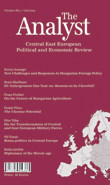Foreign Banks in Central and Eastern Europe
Foreign Banks in Central and Eastern Europe
Author(s): Zsuzsa FöldváriSubject(s): Economy
Published by: Globális Tudás Alapítvány
Summary/Abstract: By now, 16 years after the collapse of the Socialist banking systems, the overwhelming majority of the financial world of the region has become the property of foreign banks. In most countries of the region - in Poland, Hungary, the Czech Republic, Romania, Bulgaria, Bosnia - the share of foreign banks is well over 60%, and it reaches 98% in Estonia, 97% in Slovakia, 93% in Lithuania and 91% in Croatia. The only exception with a 38% rate is Slovenia, a country wary of foreign banks. While over the last two years the region has produced an economic growth figure three times the average rate of growth of the countries in the euro region, banking has grown three times as fast as the economy overall. Nevertheless, the success story of foreign banks in Central and Eastern Europe is a mixed blessing. Banks in Eastern Europe attain much higher profits than commercial financial institutions in the western part of the continent, while so far the efficiency of their activities has been much worse.
Journal: The Analyst - Central and Eastern European Review - English Edition
- Issue Year: 2005
- Issue No: 02
- Page Range: 85-106
- Page Count: 22
- Language: English

